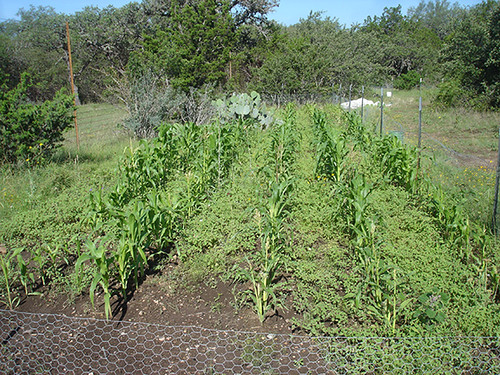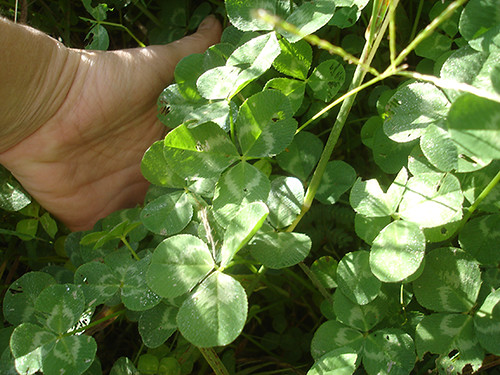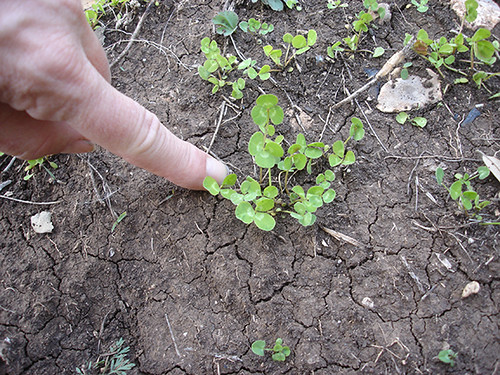|
|
Post by walnuttr on May 25, 2014 4:15:44 GMT -5
Steve, we add sulfur, rock phosphate, wood ash, composted manure, compost tea and molasses too. However, we really started seeing a difference once we started applying the weak vinegar solution. My thought was you can amend the soil, but if the water is still alkaline you are losing ground. Thanks, Tim. I did not realize white clover was perennial. I'm going to leave what I can for the bees in between furrows as a living mulch. I tried crimson clover in another field about five years ago and it didn't do any better. I thought that problem was lack of inoculant, but since this had inoculant, it's something else. Really odd that clover has an issue with our situation, when there are so many native legumes and we have no trouble with other leguminous cover crops (Austrian field pea, vetches)or growing beans of any type. Hi Flowerweaver. this one puzzles me too, Only question from here is how long between innoculation and sowing, and did the seed get totally dried out in that time? More than a couple of weeks of dry, and the rhizobium bugs die off . Hard with the colours in pix, but the clover looks too pale, like it germinated an grew as far as it can on its reserves of P & N then just stopped 'coz the rhizo bugs either already died, or the rhizo just cannot handle the high pH soil. How about a test; a strip of bag Nitrogen, another strip of bag phosphate, and a strip of iron pyrites......or something else that will release acid as it weathers? Definitely also agree that the day-length might be a major, everything needs it's sunshine to power the processing, and being a perennial its strategy may be to just wait for some longer days. |
|
|
|
Post by flowerweaver on May 29, 2014 10:38:41 GMT -5
walnuttr a few of the clovers have really taken off and greened up now that the day length is increasing, but the majority remain small but healthy. The seed we planted had a rhizobium coating and the field was/is kept consistently moist with the irrigation we must use in our semi-arid/arid climate. I do like your stip test idea! Currently some dove weed (an annual) has started growing among it--where that seed came from is a mystery as we have little of the plant even though it is native to the drier lands over the hills to the west of us. I'm inclined not to remove the dove weed before it flowers and produces more seed, as it would be a lot of work and it doesn't get very big. It will also shade the corn roots where the clover is failing to perform presently. Pioneers used it as a green tea and it gives off a pleasant aroma when touched, although it is somewhat toxic once it flowers (as I unfortunately once discovered on my own). The inter-planted corn is mostly knee to chest high now, which should give the clover a bit more shade from our intense sun. The early dent corn is tasseling; unfortunately it is very short! Although this new field was amended it could use a lot more organic matter, which will improve over time as our others have. If the NZ clover survives, great, if not it will get tilled under next spring. 
|
|
|
|
Post by walnuttr on Jun 3, 2014 17:24:26 GMT -5
Looking good in there,FW. The dove foot/weed is of a geranium family?
The question on innoculum was the drying out time between initial treatment and you getting it into the good earth. Another fiddle would be to grab a scoop of earth from one side of a healthy plant, including a bitt of clover root, and stir it in beside a couple of retarded plants to see if the inoculum transfers across.
A tree nursery I worked at had near total failure of pine (radiata)seedlings in a leased field , until we raked soil & litter up from under an older forest and scattered that over the 2 acres.
Cheers, W
|
|
|
|
Post by flowerweaver on Oct 3, 2014 10:06:51 GMT -5
richardw jondear raymondo oxbowfarm MikeH walnuttr steev I have a follow up report on the New Zealand clover and a few questions... As the corn grew the New Zealand clover, which never surpassed miniscule, was overtaken by a local native plant called Doveweed or Prairie Croton ( Croton texensis), a Euphorbia species. Since it is a small branching drought tolerant annual plant and was acting as a green cover I let it grow. Seemingly the clover died from this overshadowing--at the end of season in July, after I pulled out the spent corn and the Doveweed, there was absolutely no evidence of the clover anywhere. Then, I planted cowpeas in that field. You can imagine my shock yesterday to discover healthy, 10 inch tall NZ clover in between the rows, some of it blooming (I'm sure my bees were happy)! Somewhere on this forum I read that crimson or red clover was detrimental to plant between corn rows. ( Joseph Lofthouse ?) Is that also true of NZ white clover, and could this have been affecting both? Now that it has a leguminous companion it is finally able to flourish? Or did it just take this much time to establish (8 months)? Could the wetter than lately summer/early fall have contributed by lowering the pH from my usual alkaline irrigation? Or did it just need more shading?  As a reminder, this is what it looked like for most of this time: 
|
|
|
|
Post by richardw on Oct 3, 2014 13:55:34 GMT -5
That clover is looking good now, so what alkaline levels are your soil normally,i think 6-8 months to get established is what one would expect
|
|
|
|
Post by flowerweaver on Oct 3, 2014 15:50:04 GMT -5
richardw that relatively new field is around a 7 to 7.5 in pH. The soil I have worked for 14 years is nearer to 6.5 to 7 now.
|
|
|
|
Post by richardw on Oct 4, 2014 13:19:33 GMT -5
About 6.5 is what it is here,but 7,5 is getting up a bit though
|
|



